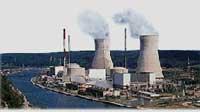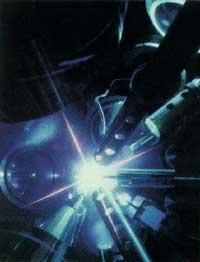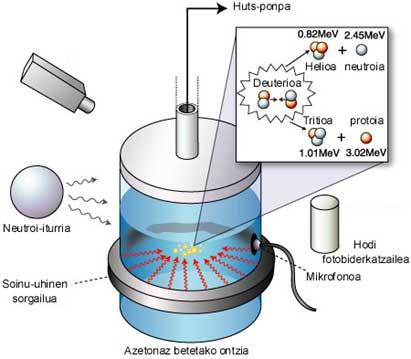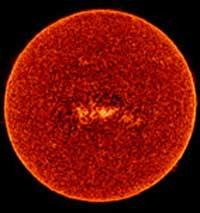Cold fusion?
Nuclear fusion can be the future of energy sources. Among other things, fusion is considered a 'clean' fission alternative, since it has the same power capacity as the latter, without generating very dangerous waste.
What are fission and fusion?

Both processes are related to the nuclei of atoms. Fission is "breaking" large cores. Therefore, the raw material for this process is uranium, the largest atom of nature. However, not all uranium nuclei are easily separated: radioactive isotopes are essential for carrying out this process. Uranium is "enriched" in these isotopes. Another solution is to artificially make atoms heavier than uranium, such as plutonium. All plutonium isotopes are radioactive, a unique element for the production of atomic bombs. In the power plants, however, the fission has great problems, mainly because the residues that leave the reactor are also radioactive.
Fusion is an opposite process, that is, the union and union of two small atoms. The energy released by this process is much higher than that of fission, besides having as raw material small non-dangerous atoms, isotopes of hydrogen. This type of hydrogen, called deuterium, is very abundant in the sea.

However, for the fission to occur, you have to give it a lot of energy. The resulting amount is much higher, but process activation requires a lot of energy. For example, hydrogen pumps that were developed after World War II (i.e., fusion pumps) had to use a small fission pump to "launch" them. This means that to blow up the H pump you must take the activation energy of another bomb like the one that was emitted in Hiroshima.
Cold in cold weather
Therefore, it was not possible to exploit the fusion to produce electricity. If fusion could affect a controllable temperature, the problem of conventional nuclear power plants could be solved. But this research did not yield results and lately there have been great discussions to decide whether to spend money on them.
The journal Science reviews this week an experiment of cold fusion. The American physicist Rusi Taleyarkhan introduced in a cylindrical container the deuterized acetone of all hydrogen atoms and bombarded it by sound waves. At the same time, it bombed above all a range of high speed neutrons. In this way, bubbles of one millimeter diameter were formed that interacted with deuterium atoms, supposedly merged. This technique is called acoustic cavitation.

Doubts and doubts Doubts
Two deuterium atoms create, by fusion, an atom of helium and a neutron. But that's not what scientists have seen. In fact, in the same process, tritium and protons can be formed, but without a fusion. The researchers say that there have been neutrons and tritium, that is, both reactions have occurred, so they announce that there has been a fusion.
One of the products of the experiment has been the neutron, but the other the tritio. Therefore, the question has remained in the air. Has the fusion really happened or has only tritio arisen?

The editors of the journal Science decide to publish the article. Do you think, therefore, that fusion actually occurred? This journal, like all research journals, does not publish articles without the judgement of experts in the subject. This is what the journal Science has done with the article of the fusion.
These experts requested the detection of neutrons with a more accurate detector. Then American physicists Dan Shapira and Michael Saltmarsh tried to repeat the Taleyarkhan experiment with this detector and did not detect neutrons. They concluded that no fusion occurs. But other scientists have also criticized this last experiment.
In the journal Science of this week it was decided to communicate the cold fusion, a decision that is justified in the editorial. Editor Donald Kennedy explains the controversy aroused. Accepting this debate, the editors have defended the need to report this type of research and that in these cases the criteria should not be very strict.
Science has said, but there is an intense debate.
Buletina
Bidali zure helbide elektronikoa eta jaso asteroko buletina zure sarrera-ontzian











